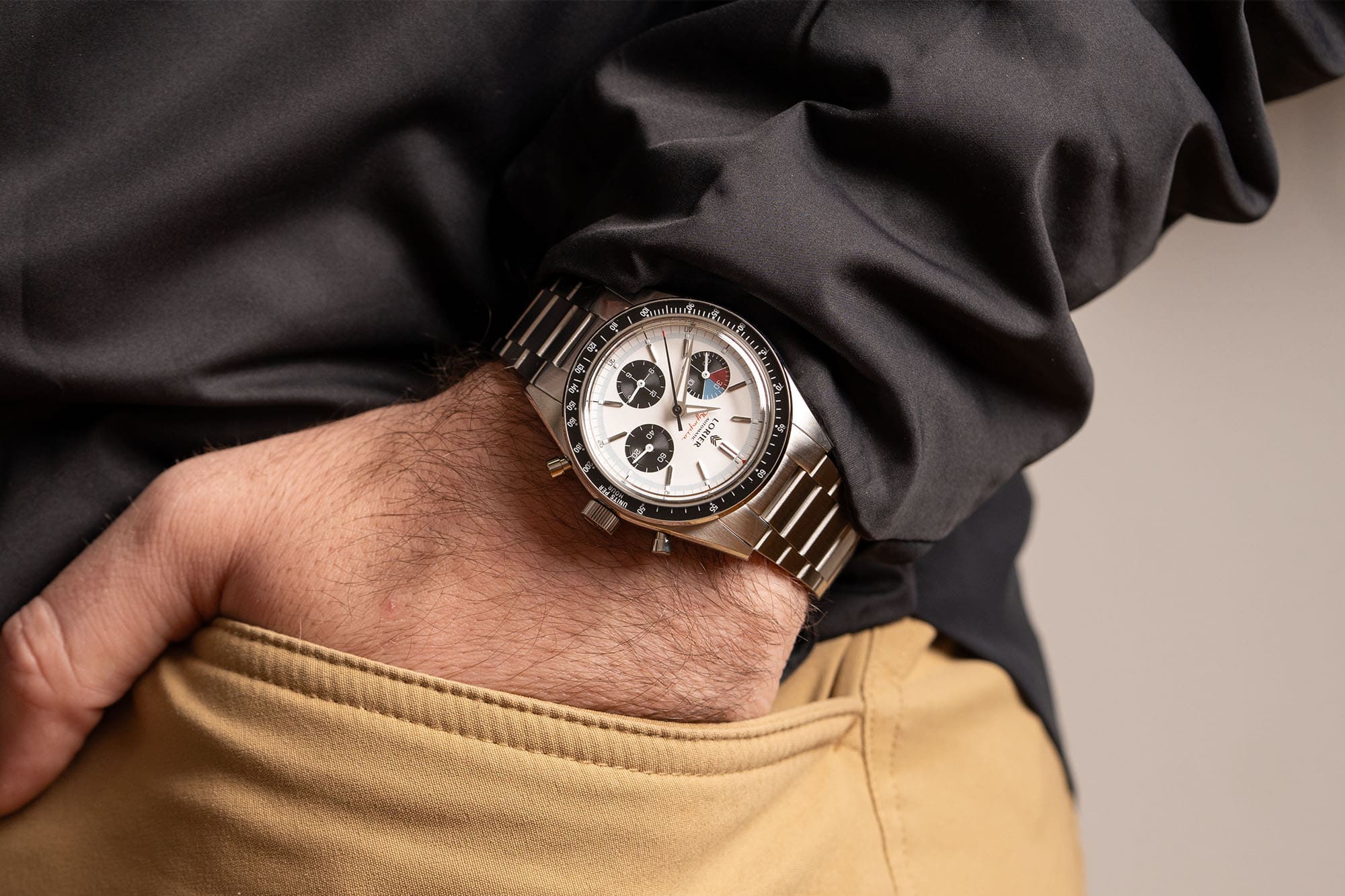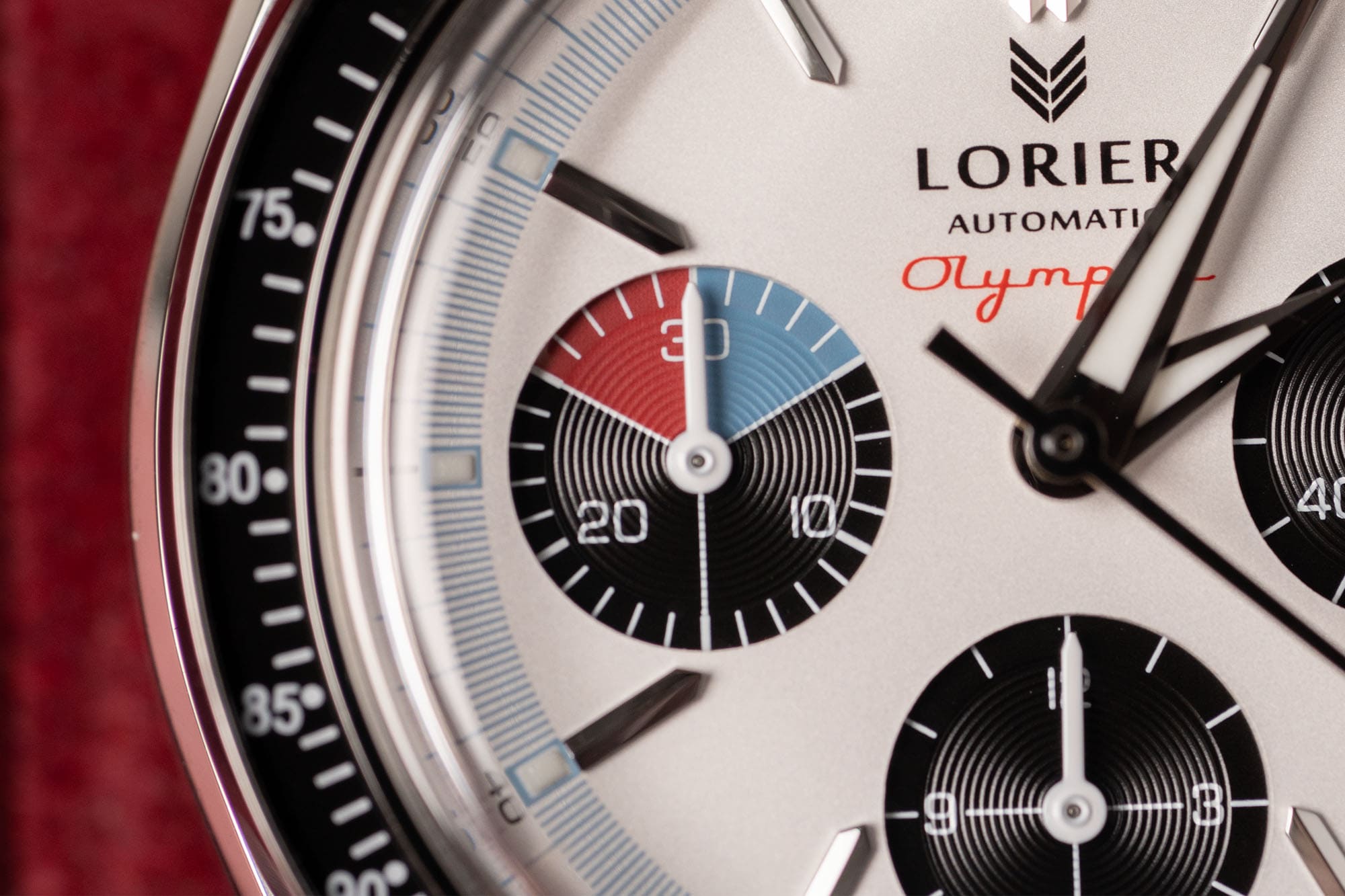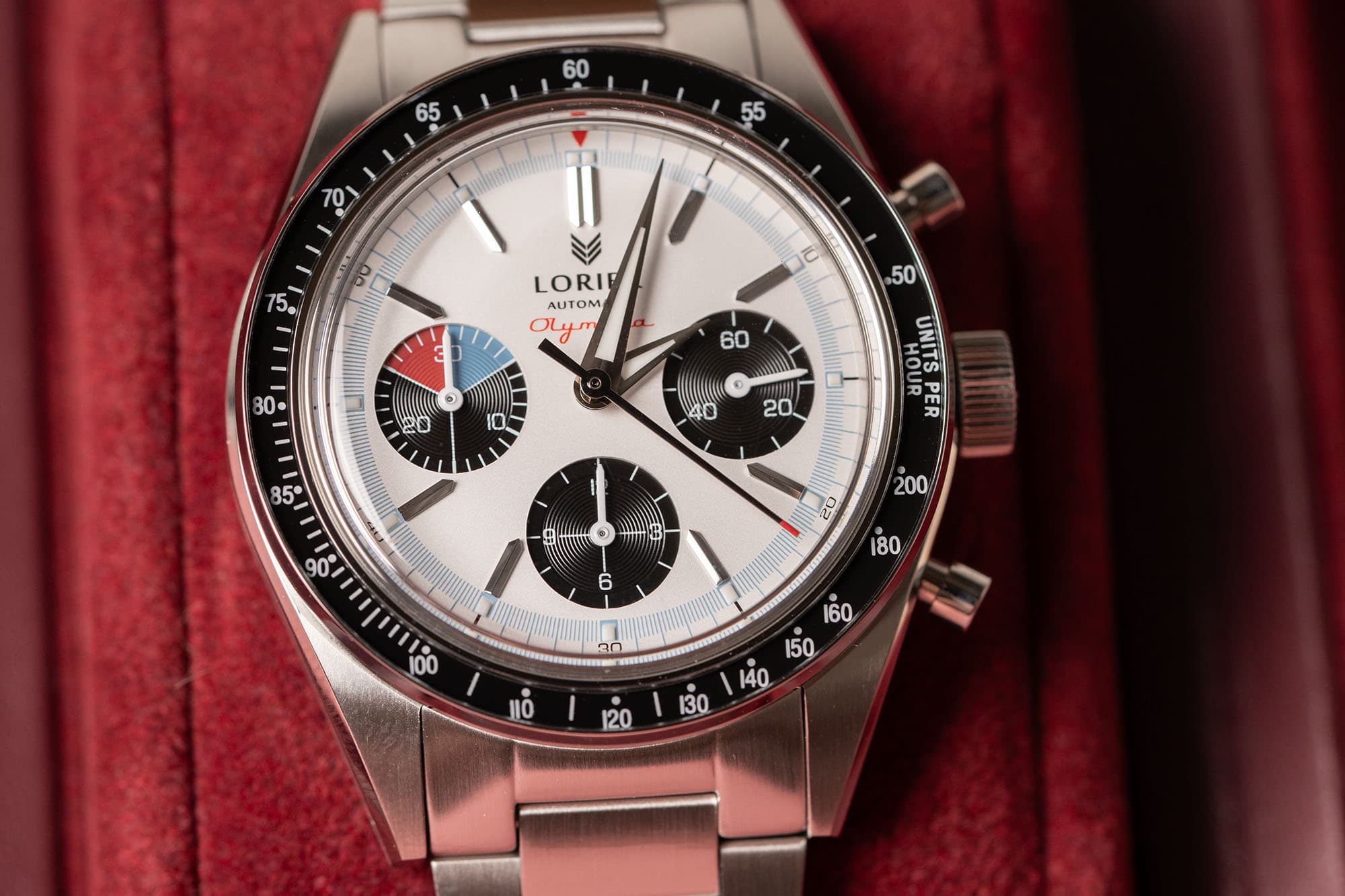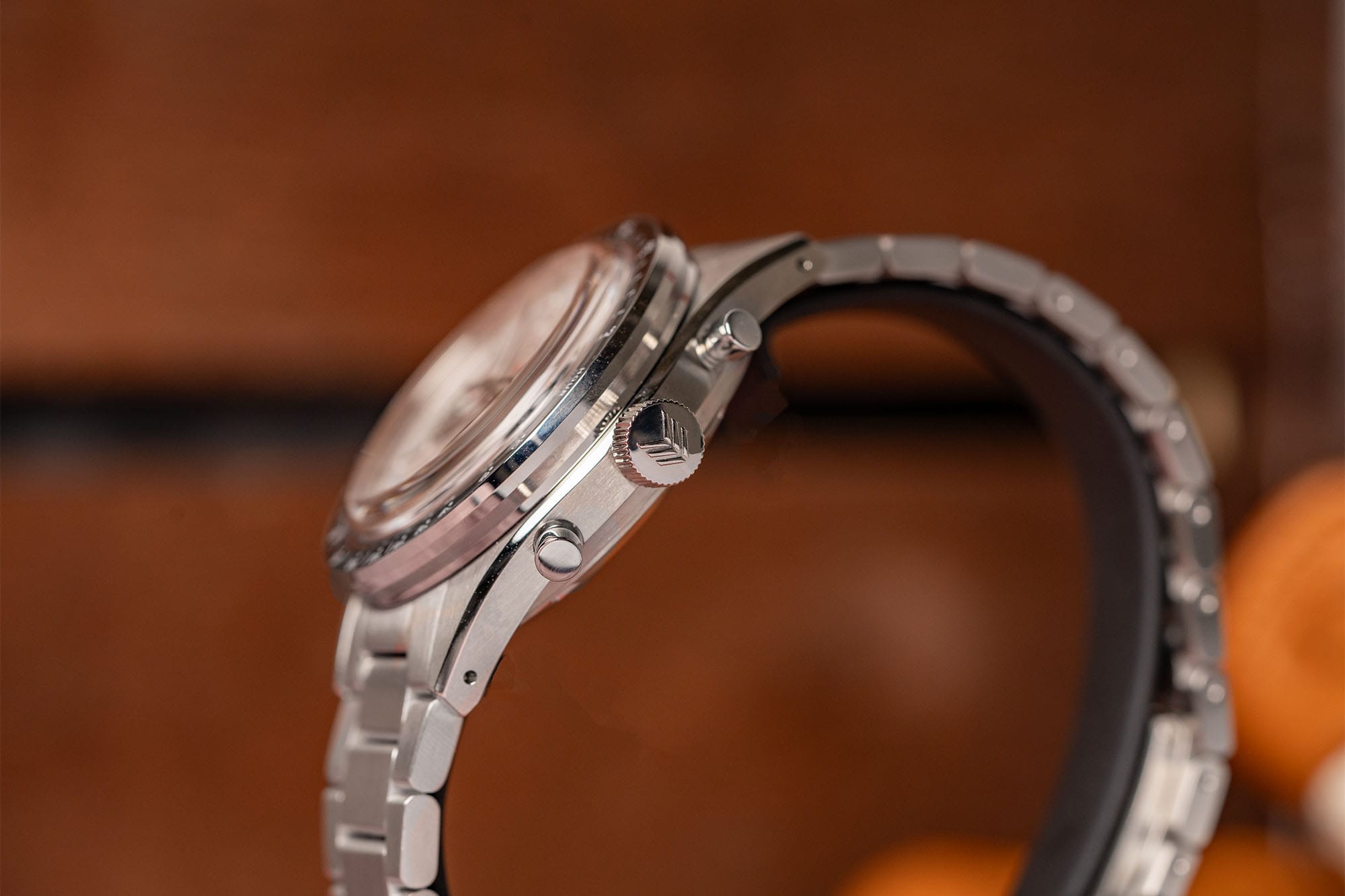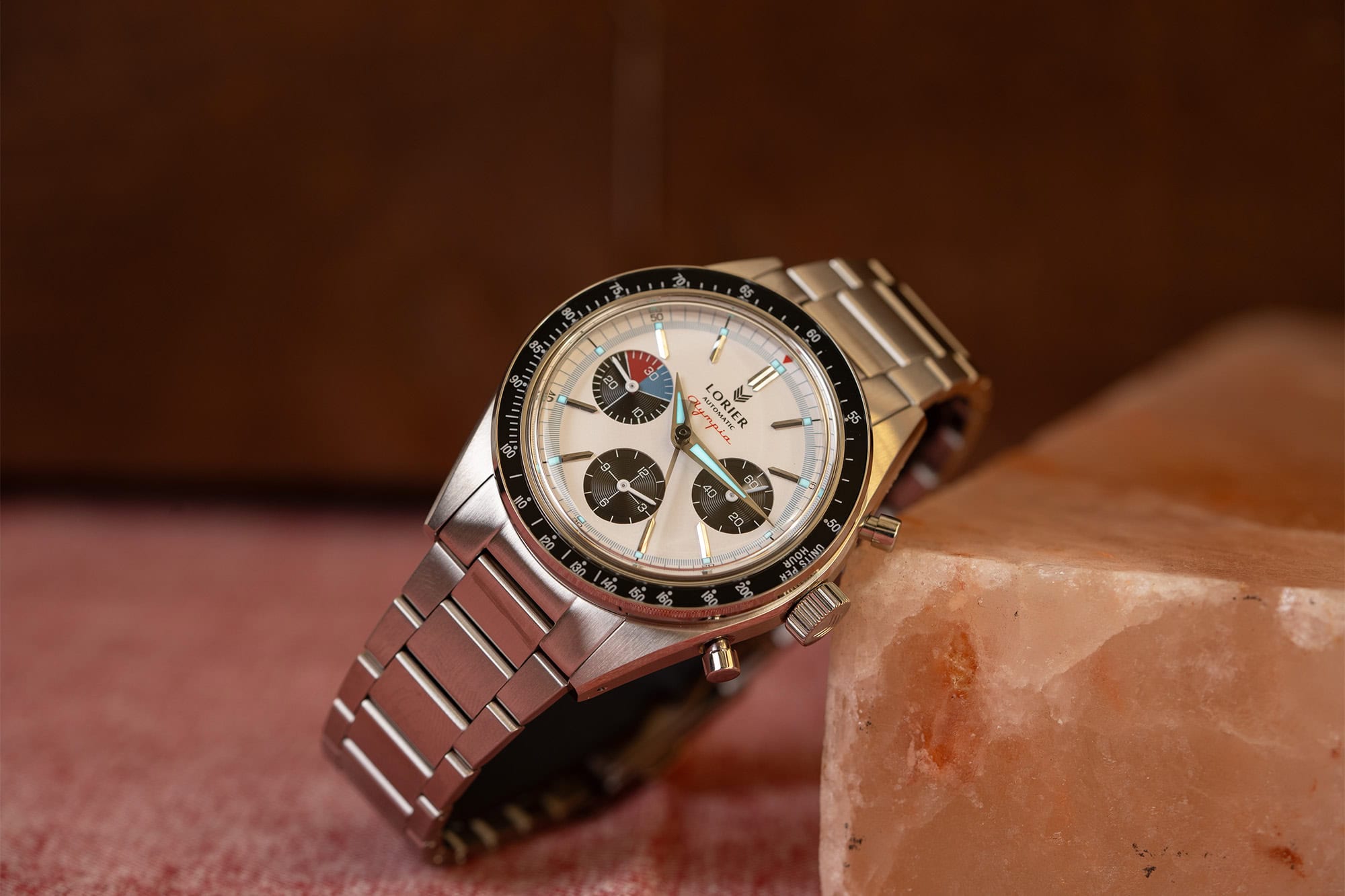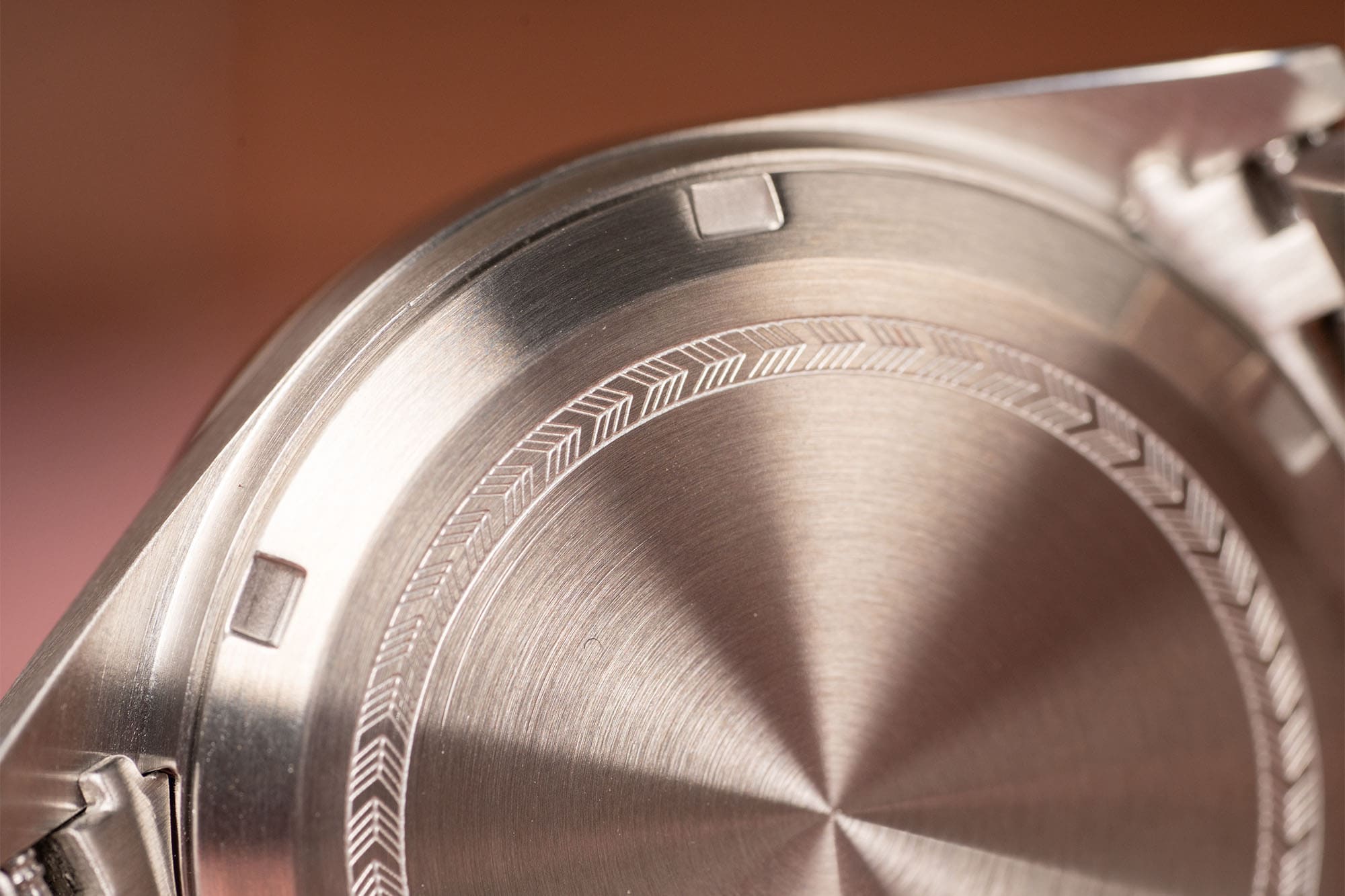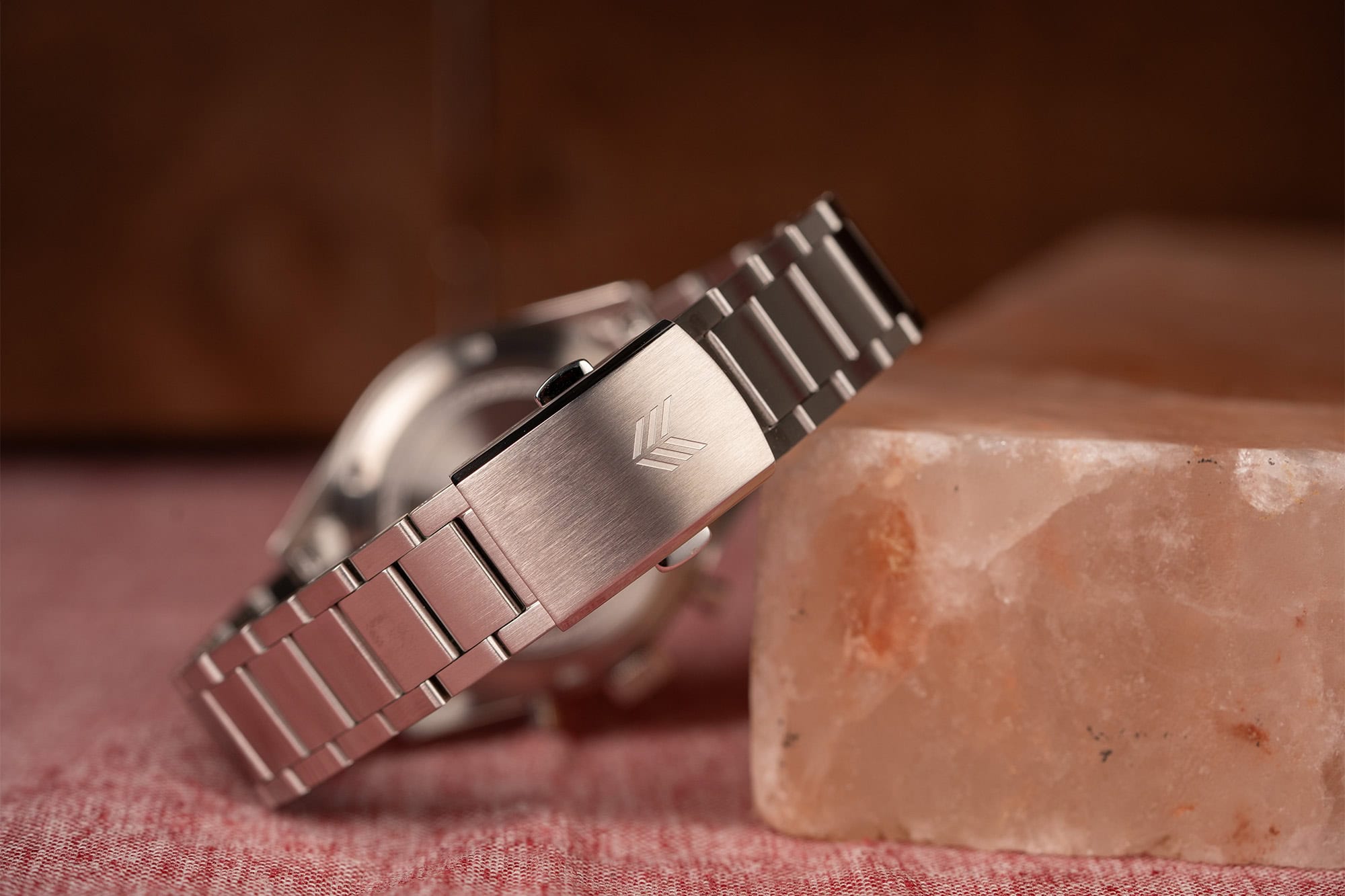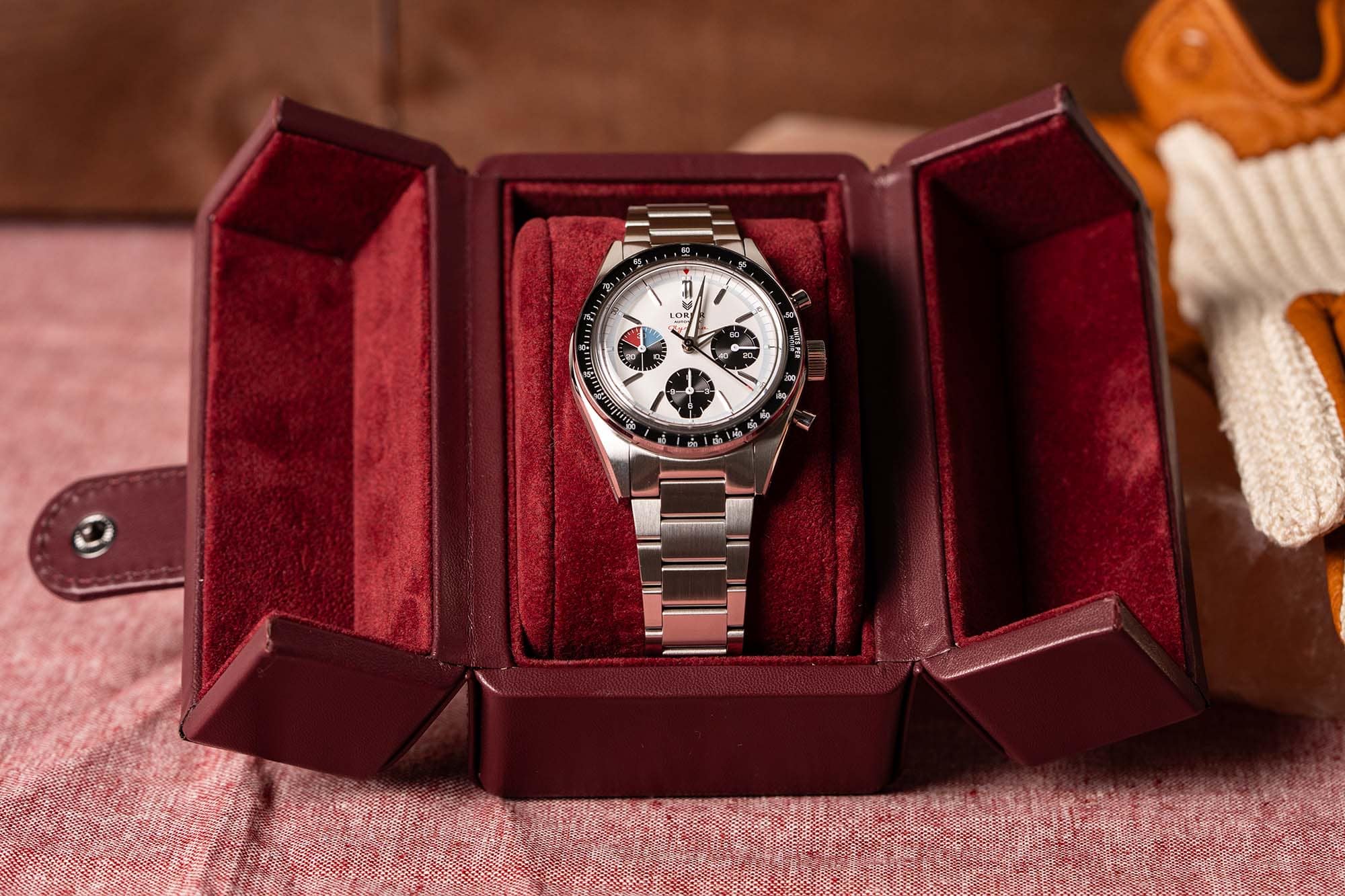No Windup Watch Fair would be complete without Lorier. Since the brand’s introduction six years ago, they have become a fixture of the show and a consistent hit among attendees. Seriously, anyone who dropped by Center 415 this past weekend will know just how hard it was to even get to the Lorier booth. The big draw for the brand this week was their latest release; a new chronograph they’re calling the Olympia. In the lead-up to the show, I got to spend some time with the new watch, and with Windup behind us and the Olympia now available to everyone, it seemed like the right time to share my thoughts.
Before we get into the specifics of the watch itself, it’s worth taking a moment to consider where this new model will sit in the Lorier catalog, and what it’s doing there. The short answer is that the Lorier Olympia is taking the place of the immensely popular Lorier Gemini. That watch, which was first unveiled at Windup Watch Fair in New York City a full five years ago, was a mid-century inspired bi-compax chronograph powered by the Seagull ST19 hand-wound movement.
Hands-On: the Lorier Olympia Chronograph
Stainless Steel
SII NE88
White
Yes
Acrylic
Stainless steel bracelet
50 meters
39 x 46mm
13.8mm
20mm
screw down
Yes
$899
I’ve always felt that the Lorier Gemini (and the Lorier Gemini SII) represented a serious step forward for Lorier. The introduction of the Gemini seemed to me a mark of self-assurance and coincided with a pivot toward a slightly more identifiable design language. But in the same way that NASA’s Gemini missions served as a bridge from Mercury and the earliest days of manned spaceflight to the heights of the Apollo program, Lorier’s Gemini has served as somewhat of a bridge from the earliest days of Lorier, to their current position as not just a critical piece of the microbrand market, but as an established brand in its own right.
I’m sure the first question that will spring to mind for many of you is something along the lines of: “Why didn’t Lorier just call this the Gemini SIII?” It’s a fair question. After all, other models in the Lorier lineup have seen significant change from one generation to the next without a new model name — I’m thinking in particular of the Lorier Hydra which has, at various times, been a dressy diver, a compressor-style diver, and now exists as a dive GMT. That said, the Olympia does feel like more than a simple evolution of the Gemini, it feels like a whole new watch, and for as good as the name ‘Gemini’ undeniably is, ‘Olympia’ feels like a natural fit for this latest Lorier release.
So if this isn’t just a new Gemini, what is it? Well, the Olympia is, simply put, a tri-compax sports chronograph inspired by what Lorier calls the “glory days of mechanical chronographs.” Visually, the watch is clearly a Lorier — Lorenzo and Lauren have done a great job of establishing a visual language for the brand — but its inspirations are clear. The DNA of watches like the Omega Speedmaster, Rolex Daytona, UG Compax, and Heuer Carrera is apparent, but the watch manages to not feel too much like any one of them.
The Lorier Olympia is relatively compact, measuring 39mm across and 46mm lug-to-lug, but the real story here comes with discussing the watch’s thickness. I’ll give you that number in a minute, but before I do, I want to offer some context. In searching for a new movement to power the Olympia, Lorier has opted to use Seiko Instruments Inc.’s (SII) NE88 chronograph movement. Lorier seems to have reached this decision for a number of reasons (all of which you can read about on their website here), but the gist seems to be that they felt the NE88 was the right balance of price, quality, and features to replace the no-longer viable Seagull ST19 that has powered the Gemini.
Now, the NE88 was designed by SII to serve as a general alternative to the Valjoux 7750 and is a really solid movement. It has all the features people tend to want out of an automatic chronograph movement (notably a column wheel and vertical clutch), and is even slightly smaller than the 7750. But the movement is still relatively thick, at 7.6mm (the Seagull ST19, admittedly without a rotor, is about a millimeter thinner, and the ubiquitous ETA 2824 is about 3mm thinner). Fitting a movement that size into a robust sports watch presents a number of challenges, particularly for anyone who prizes thinness.
Lorier has tackled this challenge admirably, and the Olympia comes in at a totally reasonable 13.8mm thick, 11.7mm of which is case, with an additional 2.1mm coming from the domed acrylic crystal. Overall, the watch wears really well, and after a few days of wearing the Olympia, any concerns I might have had about thickness were more than washed away. But that’s not to say that Lorier has solved the problem perfectly.
One of the big changes from the Gemini to the Olympia is that Lorier has opted to drop the rotating bezel used on the Gemini in favor of a more traditional fixed tachymeter. Your mileage on this may vary, but the resulting bezel profile leaves something to be desired. I don’t tend to mind a thick rotating bezel — thickness here makes the bezels easier to engage with, and their knurled or textured profiles tend to hide some visual thickness — but the neatly polished bezel of the Olympia stands out.
This perceived bezel thickness is far from a deal breaker, and while I noticed it less as my time with the watch passed, it really stood out, especially at first. I’d love to see the balance between mid-case and bezel refined on future versions of the watch, should we ever encounter an Olympia SII.
The Lorier Olympia is, at least for now, available in a single configuration, with a Panda dial design, black tachymeter, and blue and red accents throughout. It’s a hugely successful design and one that had me looking at it and forgetting to check the time as I uncovered some new details about the watch. Whether it be the concentric pattern in the subdials, the subtle silver sheen to the white dial, or the small red triangle at twelve o’clock, the Olympia is replete with nods to the past and a unique sense of mid century flair that can be hard to find these days.
Like every watch from Lorier, the touchpoints of the Olympia are impeccable. The screw-down crown threads neatly, the pushers have a positive response, and the bracelet is easy to size thanks to a feature I continue to argue for on all watches: single-sided screws — which are particularly easily removed thanks to an included screwdriver. I might have liked to see the detent for the absent date complication removed from the movement, but according to Lorier it just wasn’t feasible. Aside from that small quibble, interactions with the movement are quite pleasant, and the crown and pushers felt solid, especially compared to other mechanical chronographs at a similar price point.
The sharply pointed hands are a holdover from the previous model, and suit this new watch handsomely, and Lorier has opted to use their flat, three-link bracelet rather than their five-link jubilee-style option. I’m sure some will wish for the jubilee bracelet, but I think the sporty three-link fits the watch perfectly and is, as I’ve come to expect from Lorier, comfortable and robust.
One last thing to note here is that the Olympia does cost more than the outgoing Gemini. While the Gemini was an absolute screaming deal at $499, the Olympia comes in at $899. Keen followers of the brand will note that this is the most expensive watch we’ve yet seen from Lorier, but I can’t say that it’s not worth it. At $900, it’s actually one of the best value automatic chronographs I can think of, and will I’m sure be hugely popular, and deservedly so.
As always, I came away from my time with Lorier’s latest release impressed, not only with the quality of the watch but Lorier’s commitment to evolving their watches. A new release from Lorier usually gets me excited not only for it, but for what it might imply is coming next as well, and the Olympia is no exception. Like the Gemini, the Olympia seems to indicate a new phase for Lorier, one slightly more grown up and considered. This is not the upstart brand that they were at their launch, Lorier is a serious player here to stay, and the Olympia is a great reminder of that. Lorier
The post Hands-On: the Lorier Olympia Chronograph appeared first on Worn & Wound.


